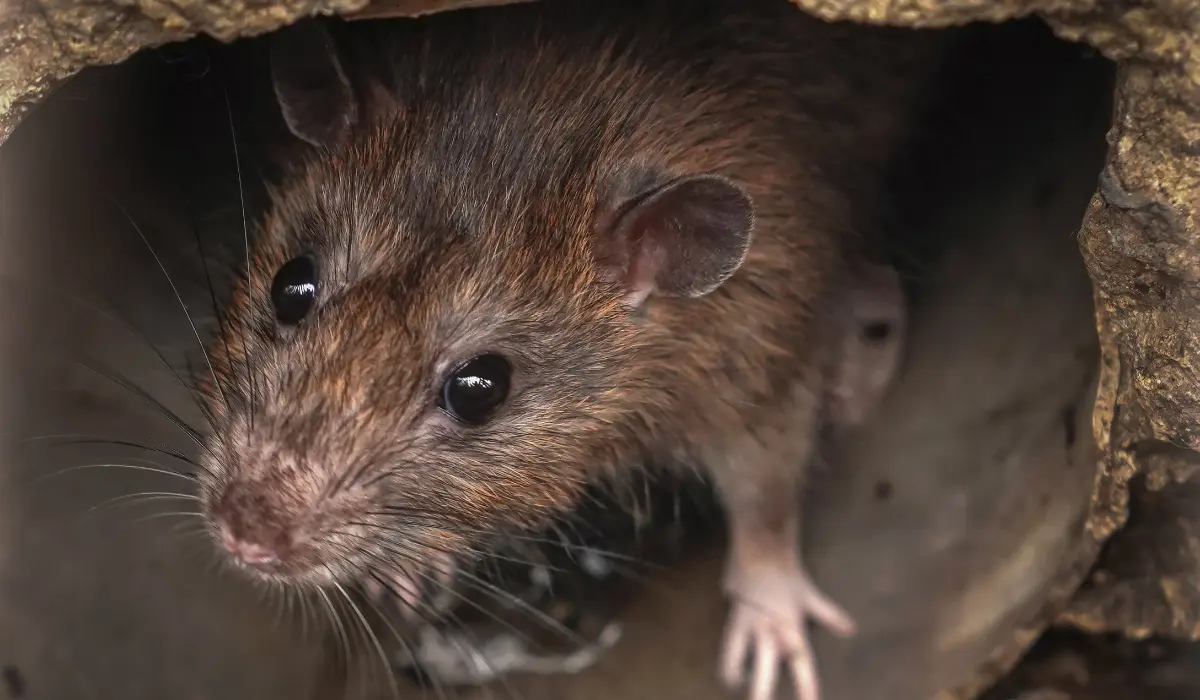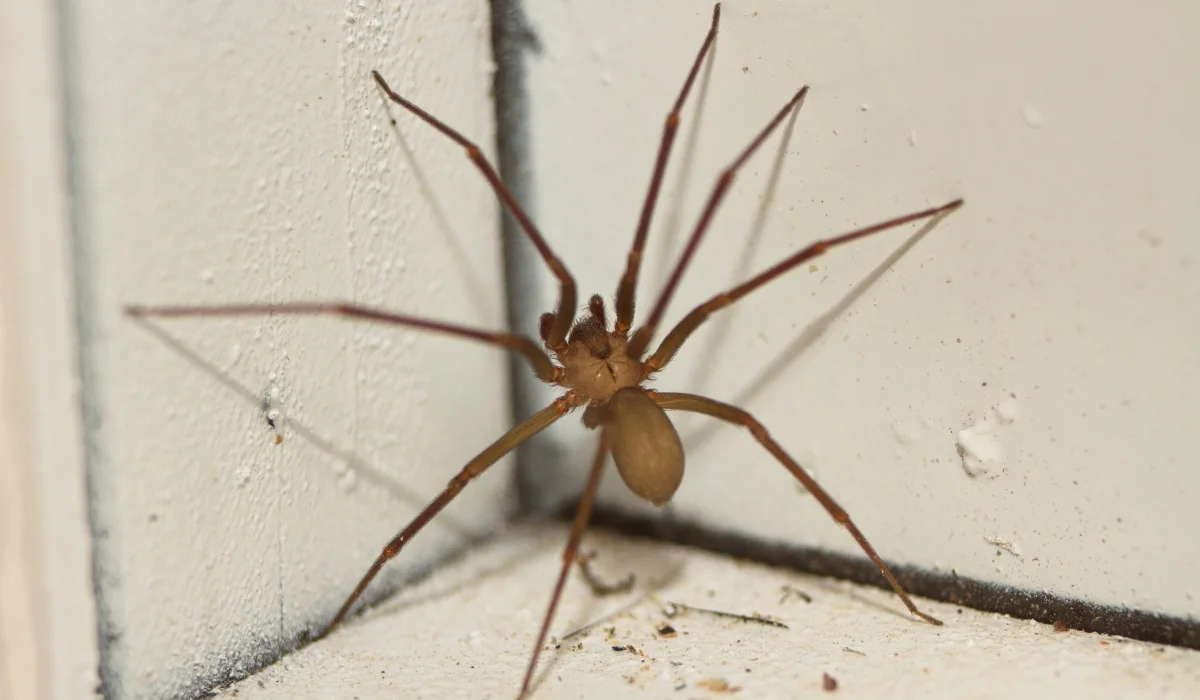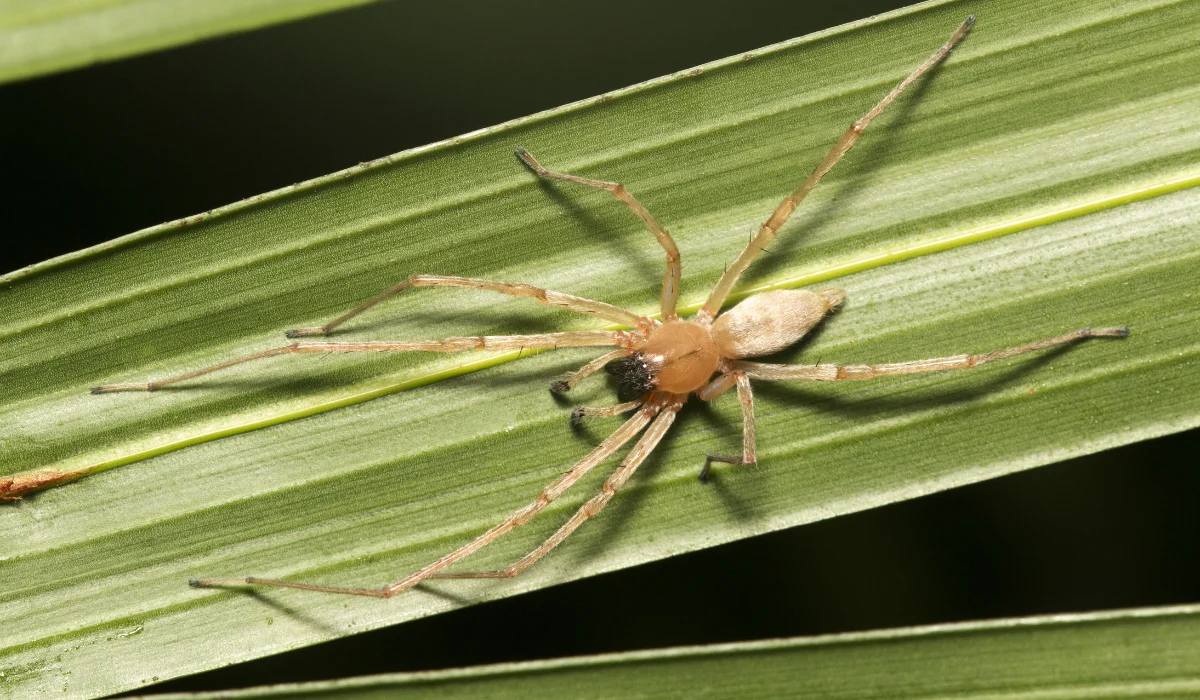Rats are smart and adapt quickly, thriving anywhere from busy cities to quiet countryside spots. They build nests in hidden spots safe from predators and close to food.
While they don’t travel far in cities, thanks to easy access and abundant food—often just 50 to 150 feet—country rats roam much wider areas to find what they need.
Want to learn more about rat behavior and preventive strategies? Keep reading to know how far rats travel and help control infestations effectively!
Key Takeaways
- Rats typically travel up to 300 feet from their nests, with distances varying by species and food availability.
- They are less active during the day but may still forage nearby, while nighttime sees increased activity, travel for food, and social interactions.
- Environmental factors such as water availability and predation threats significantly influence how far rats venture from their nests.
- Recognizing a rat infestation early can prevent more extensive issues, indicated by signs like droppings, gnaw marks, and unusual noises.
- To prevent rat infestations, maintain sanitation, secure food sources, and consider professional pest control if simple measures fail.
HOW FAR DO RATS TRAVEL FROM THEIR NESTS
Rats in Louisiana, particularly the common urban species like the Norway rat and the roof rat, generally maintain a relatively small home range from their nesting sites.
Depending on the time of day, they can travel up to 300 feet (about 90 meters) from their nesting site like rat burrows.
During daylight hours, rats are less active and don’t venture too far from their nests. However, they still leave the nest to conduct various behaviors critical for their survival, such as:
- Foraging for food.
- Exploring surroundings.
- Maintaining the nest.
Rat activity spikes significantly at night. As you turn in for the night, they’re just beginning their active hours, engaging in behaviors in search of food farther from their nests:
- Extended foraging.
- Nest building.
- Social interactions.
7 FACTORS INFLUENCING HOW FAR RATS TRAVEL FROM THEIR NESTS
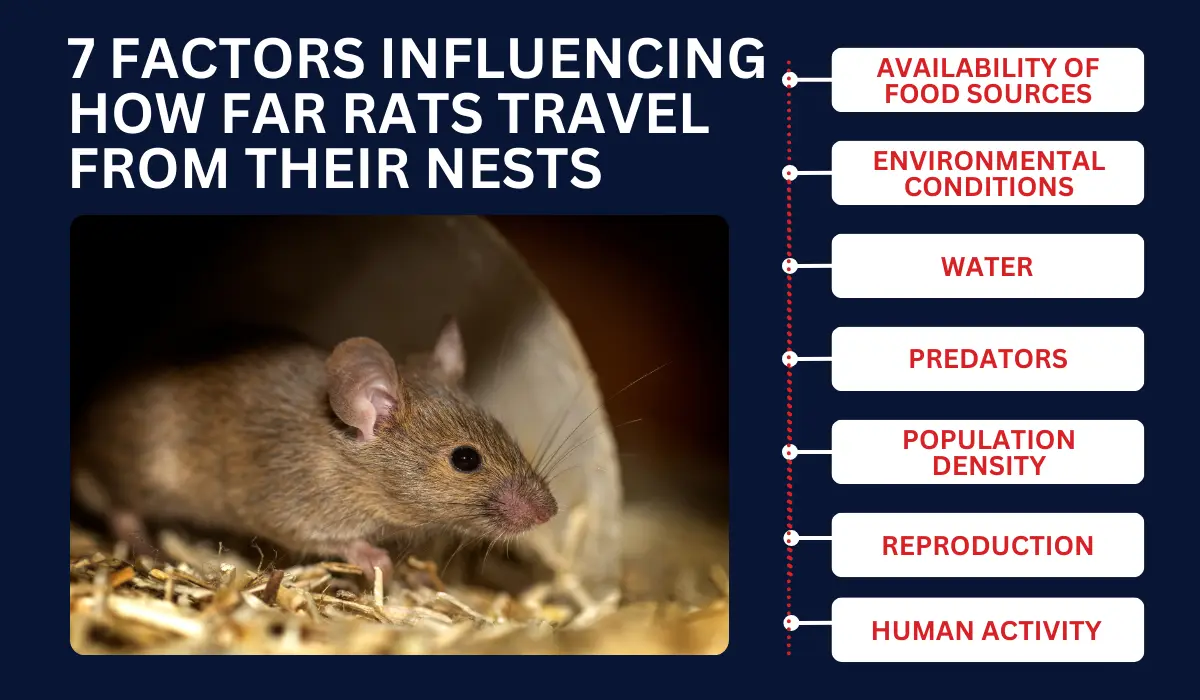
1. Availability of Food Sources
Rats adjust their travel based on where they can find food. So, closer food sources generally mean shorter foraging trips.
Here’s how far the common species travel for food sources from the rat’s nests:
| Types of Rat | Typical Food Sources | Distance from Nest |
Black Rat (Roof Rat) | Fruits, Seeds | up to 300 feet(about 90 meters) |
Brown Rat (Norway Rat)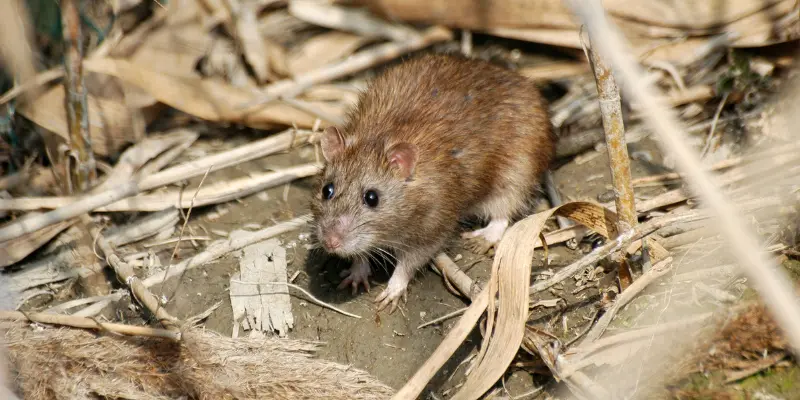 | Cereals, Garbage | 50 – 150 feet(15 – 45 meters) |
2. Environmental Conditions
Rats exhibit different movement patterns based on their surroundings. In rural areas, rats may travel further to locate resources, while urban rats benefit from the close proximity of human refuse.
Other environmental factors that may affect their movement patterns include:
- Shelter Availability
- Temperature and Climate
- Human Population Density
3. Water
Rats prioritize nests near water sources. Travel can be limited in places with plentiful water, but rats might roam much further in dryer regions. Here’s how water availability may affect their traveled distance:
| Water Availability | Typical Distance Traveled |
| Abundant | 100 – 200 feet (30-60 meters) |
| Scarce | Up to 500 feet (Around 150 meters) |
4. Predators
The threat of predators of prey influences how far and where rats travel. When the predation risk is high, they prefer to move less and stick to covered areas around predators like:
- Cats
- Birds of Prey
- Snakes
- Dogs
5. Population Density
A high rat population in a particular area often leads to competition and longer travels for resources. Conversely, low-density areas allow for shorter foraging trips.
| Population Densities | Average Travel Distance |
| High | Up to 650 feet (Up to 200 meters) |
| Low | 65 – 160 feet (20 – 50 meters) |
6. Reproduction
Reproductive urges can also drive rats to expand their travel. Key reproductive cycle stages that may drive them to wander further include:
- Mating Season Onset
- Birth of Litter
- Weaning
7. Human Activity
Human activity heavily influences rat movements. Here’s how some of the typical human activities affect rat movement patterns:
| Human Activities | Impact on Rat Movement |
| Waste Disposal | Reduced Travel |
| Farming Practices | Increased Travel |
| Urban Development | Reduced or Modified Travel |
ARE RATS IN YOUR HOME?
Identifying their arrival at home often involves spotting a rat’s nest through various physical signs and observing behavioral changes around the property.
It’s always smart to catch onto the physical signs of a rat infestation early to prevent a small problem from becoming unmanageable. They may include:
- Droppings: Small, dark, and banana-shaped near food supplies.
- Gnaw Marks: Evidence of rat holes on food packaging or electrical wires.
- Nesting Materials: Shredded paper, fabric, or plant materials in secluded areas.
The way rats act can give away their presence just as much as the physical evidence. Unusual rat sounds in the walls could point to them passing through your home’s interior.
Other behavioral indicators include:
| Behavioral Indicators | Likely Location |
| Noises at Night | Basements, Eaves, Attics, Walls, Woodpiles |
| Rub Marks | Along Walls, Entry Points, Crawl spaces |
| Sightings | Sewers, Porches, Any Food Sources |
PREVENTING FUTURE RAT INFESTATIONS
As homeowners in New Orleans and the surrounding area, you must maintain sanitation standards to deter future invaders and health risks. Here’s how to employ targeted actions to ensure your home stays rat-free:
- Secure Garbage Bins: Invest in sturdy, well-sealed garbage cans to prevent rats from sniffing food scraps.
- Pet Food Protocol: Keep pet food securely stored and avoid leaving it outdoors unnecessarily.
- Declutter Your Domain: Maintain a tidy yard and garden to reduce shelter opportunities for rodents.
- Building Maintenance: Check for and seal any crevices or holes in the building’s exterior: a hole the size of a quarter is all a rat needs.
- Landscaping: Trim back vegetation to create a buffer zone around your house.
WHEN TO CALL IN THE RAT CONTROL EXPERTS
If you’re consistently finding rat droppings or hearing scratching noises within walls, it might be time to enlist help from a pest control expert.
Whether you’re in Baton Rouge or New Orleans, seeking expert help should be easy. For immediate intervention for a severe infestation, let Lajaunie’s rat control specialists tailor a solution that’s right for your home.
For more information about the areas we service, visit our location page.
 By: LaJaunie's Pest Control
By: LaJaunie's Pest Control 